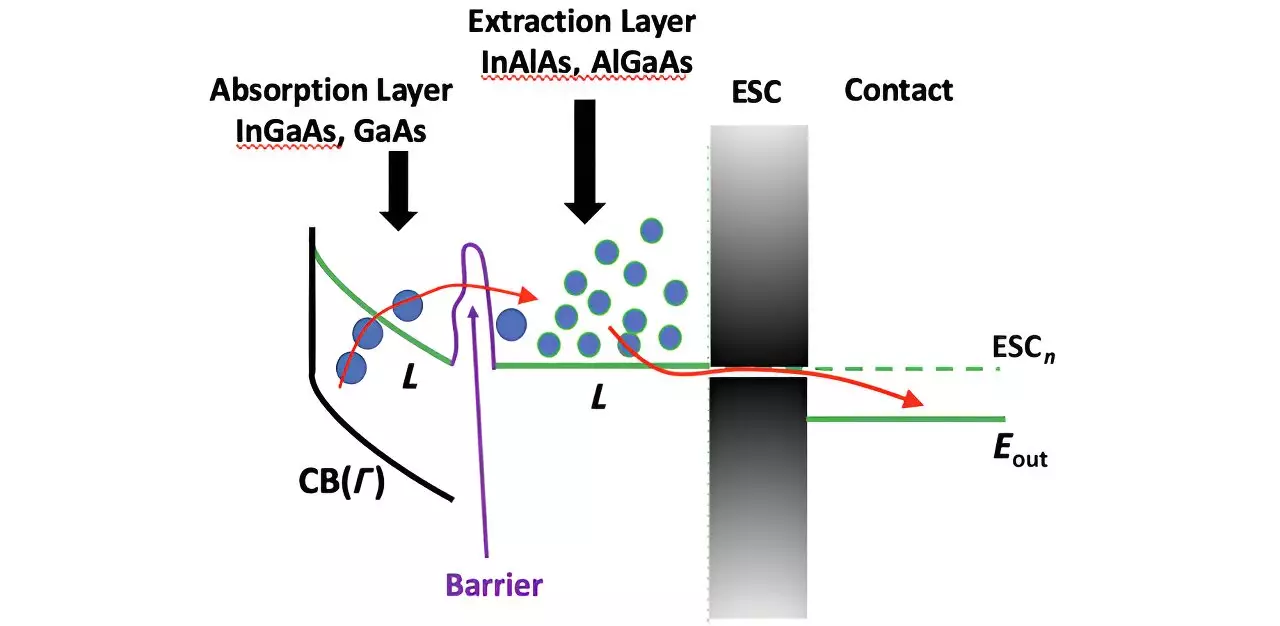The advancement in solar energy technology has opened avenues for innovative strategies to harness renewable energy more efficiently. One of the most promising yet largely untapped solutions is the concept of hot carrier solar cells. Introduced some decades ago, these cells have the potential to significantly surpass the Shockley-Queisser efficiency limit—a theoretical benchmark for the efficiency of single-junction solar cells. Despite their theoretical promise, the real-world application of hot carrier solar cells remains encumbered by various scientific and engineering challenges.
Hot carriers refer to the high-energy electrons that can be generated in solar cells when sunlight excites electrons above their normal energy states. Unlike conventional solar cells, which waste significant amounts of energy as heat, hot carrier solar cells aim to capture these high-energy electrons before they lose their excess energy. If successful, this technology could drastically improve the efficacy of solar cells by harnessing greater amounts of solar energy. However, extracting hot electrons efficiently from their source, or the active material, and getting them into an external circuit poses considerable difficulties. Specifically, the mechanics of extracting these electrons across material interfaces are fraught with complications.
Recent research has highlighted the critical role of heterostructures—the interfaces between two different materials—in the extraction of hot carriers. These interfaces create a parasitic barrier, arising from the misalignment of energy bands in the composing materials. When hot electrons at the interface encounter this barrier, their ability to efficiently tunnel through is hindered. The extraction process does not solely occur in momentum space; rather, it unfolds in real space. This distinction is pivotal because it requires a complex understanding of how energies distribute among materials in question.
After extensive experimental investigations, it was found that roughness at these interfaces—possibly just a few atoms thick—intensifies electron transfer issues. Such imperfections lead to an enhancement of the parasitic barrier, which negatively impacts the performance of hot carrier solar cells built with certain material combinations, such as indium-aluminum-arsenide (InAlAs) and indium-gallium-arsenide (InGaAs).
A groundbreaking study published in the Journal of Photonics for Energy has initiated promising explorations into the mechanics of electron tunneling between varying material systems. Using an empirical pseudopotential method, researchers have engaged in detailed calculations to assess energy bands in momentum space, bridging the gap between theoretical predictions and experimental validations. Such insights are invaluable for gleaning a deeper understanding of how evanescent states impact electron transport across heterostructures. The results indicated a remarkably large tunneling coefficient within certain material groupings, suggesting a feasible path toward more efficient hot carrier extraction mechanisms.
In particular, when contrasting AlGaAs with gallium-arsenide (GaAs), researchers noted a higher tunneling coefficient, hinting at improved efficiency over previously less effective combinations. The ability of these materials to be manufactured with atomic precision allows researchers to tailor the interface characteristics deliberately, addressing the issues of band alignment and enhancing hot carrier mobility.
Valley photovoltaics represent an enthralling extension of the hot carrier solar cell approach. The study elucidates how the hot carriers can transition between energy states in such a manner that the efficiency limitations imposed by traditional single bandgap architectures can be circumvented. The potential for systems that incorporate optimized band alignments promises not only to improve performance but to revolutionize solar energy capture.
As we stand on the cusp of significant developments in this area, the research indicates that improving the efficiency of hot carrier extraction could yield substantial dividends, fundamentally altering the landscape of solar technology. Collectively, these findings underscore the necessity of continued investment in research endeavors aimed at refining the materials used in photovoltaic cells and unraveling the complexities of electron transport phenomena across various structures. This could pave the way for the next generation of solar cells that harness the full potential of solar energy, and ultimately, contribute to a more sustainable and energy-efficient future.


Leave a Reply